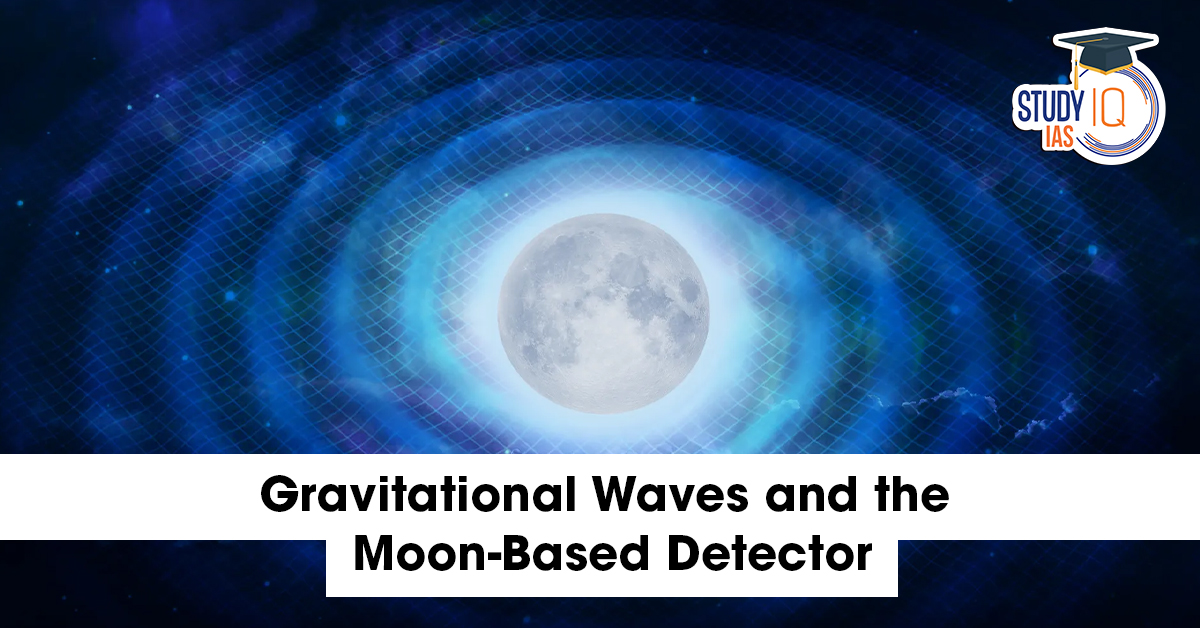Table of Contents
The quest to understand the universe has taken humanity from observing stars with telescopes to detecting the faint ripples of gravitational waves. These ripples, predicted by Einstein over a century ago, carry invaluable information about the most violent and energetic events in the cosmos. Now, researchers are planning an ambitious project: a gravitational wave detector on the Moon, called LILA (Laser Interferometer Lunar Antenna), which could revolutionize astrophysics.
What Are Gravitational Waves?
Gravitational waves are disturbances in the fabric of spacetime, generated when extremely massive objects such as black holes or neutron stars collide or accelerate.
-
Prediction: First predicted in 1916 through Einstein’s General Theory of Relativity.
-
Nature: They propagate at the speed of light, stretching and squeezing spacetime as they pass.
-
Detection Challenge: On Earth, gravitational waves produce minuscule effects — smaller than the width of an atom — requiring ultra-sensitive instruments.
-
Historical Milestone: The first direct detection occurred in 2015 by LIGO, observing two colliding black holes.
Limitations of Earth-Based Detectors
Earth-based detectors like LIGO, Virgo, and KAGRA have advanced our understanding but face limitations:
-
Can detect only higher-frequency gravitational waves.
-
Sensitive to seismic and environmental noise, limiting precision.
-
Unable to probe very distant or low-frequency cosmic events.
Why a Moon-Based Detector?
The Moon offers unique advantages for next-generation gravitational wave detection:
-
Low Seismic Noise: The Moon is geologically quieter than Earth, reducing interference.
-
Natural Vacuum: A Minimal atmosphere means fewer engineering constraints.
-
Access to Low Frequencies: Can detect sub-hertz to decihertz waves, currently inaccessible on Earth.
These factors make the Moon ideal for studying early-universe phenomena, black hole mergers, and neutron star collisions.
The LILA Project
LILA (Laser Interferometer Lunar Antenna) is envisioned in two phases:
-
LILA Pioneer:
-
A small-scale detector deployed using lunar landers.
-
Could involve private US companies or India’s Chandrayaan missions.
-
Aims to test the feasibility of lunar-based interferometry.
-
-
LILA Horizon:
-
A larger-scale setup requiring astronaut deployment.
-
Would consist of multiple interferometers for high-precision measurements.
-
Expected to fill the gaps in the cosmic gravitational wave spectrum, detecting low-frequency waves that Earth-based detectors cannot.
-
Significance of a Lunar Gravitational Wave Detector
-
Unlock the Cosmic Symphony: Detecting low-frequency waves will provide insight into massive black holes, neutron stars, and galaxy formation.
-
Study the Early Universe: Could reveal events shortly after the Big Bang, inaccessible to electromagnetic observations.
-
Complement Earth-Based Detectors: LILA will work alongside LIGO, Virgo, and KAGRA to give a fuller picture of gravitational phenomena.
-
Advance Space Science: Demonstrates humanity’s capability to conduct large-scale experiments beyond Earth.
Conclusion
The LILA mission represents a bold step in astrophysics, promising to expand our understanding of the universe by capturing the “missing notes” of the cosmic gravitational wave spectrum. By leveraging the Moon’s unique environment, scientists aim to explore phenomena that have remained beyond the reach of Earth-based instruments, potentially transforming our knowledge of black holes, neutron stars, and the origins of the cosmos.


 Commonwealth Games Host Cities (1930–2...
Commonwealth Games Host Cities (1930–2...
 G20 Summit 2025 Johannesburg: Full Outco...
G20 Summit 2025 Johannesburg: Full Outco...

























